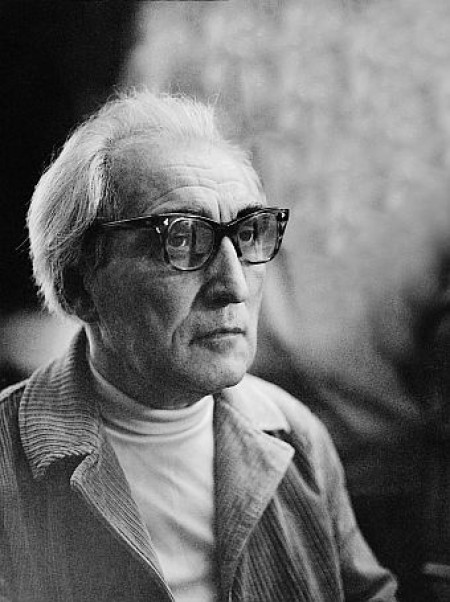
18 July 1903, Pápa – 25 April 1985, Budapest
Zoltán Horusitzky began his studies at the Academy of Music in 1918, in the preparatory piano class of István Laub, and then he became a student of the academic classes from 1920 with piano and composition majors. The latter he studied with Albert Siklós in the first two years and then with Kodály (after his return), though according to his own recollections ‘I met the mysteries of composing under the guidance of Leó Weiner.' Weiner by all means was an important person in his years of study who directed him to Erzsébet Novák - following the deterioration of their relationship with István Laub – who became the spiritual leader of the pianistic development of Horusitzky. However the unfolding of a real stage career was hindered by an accident that created an inflammation in the composer's elbow that lasted for years. (Following his recovery he enrolled at the Academy of Music again this time as a student of Arnold Székely in the academic year of 1933/1934.) Neither his composition studies went smoothly: he could finish his sophomore year only for the third time due to health issues again; therefore he received his composer degree two years after the pianist one in 1926.
Horusitzky also pursued law studies parallel with his two majors at the Academy of Music and earned his doctorate in political sciences in 1927. Following that he became a teacher at the Székesfővárosi Felsőbb Zeneiskola (Higher Music School of the Capital) while between 1937 and 1944 he was chief editor of the journal A Zene (Music) and as being such an enthusiastic propagator of the tenets and works of Kodály. Kodály made an impact on his activities as a composer, as well: his first works gaining broader attention are the cantata Fekete hold éjszakáján (At a Night of the Black Moon; premiered in 1932) and the Te Deum (premiered in 1938). His master's opinion said about him in 1925 (‘the warm and individual lyre of Zoltán Horusitzky is a great promise') he considered as a pertinent characterization and ‘greatest appreciation' valid to his entire oeuvre later, as well.
After the war he became director of the music school mentioned above, and manager of studies at the Székesfővárosi Zenetanfolyamok (Music Courses of the Capital). From 1946 he became an external piano teacher at the Academy of Music, and then he was appointed professor there from 1949, giving up his two lower level positions. The improving living conditions favored his compositional work, as well: he wrote the opera in three acts Báthory Zsigmond - considered to be his main work - between 1944 and 1953, which attempted unconcealed the revival of the Hungarian historical opera having been interrupted with Erkel. Though the suite made of the opera was premiered in 1953 and the composer was awarded the Erkel Prize the next year, the stage premier in Budapest was postponed up to 1960, and the wrangling preceding that as well as the failing of the expected appreciation remained the most unpleasant memory of Horusitzky's compositional career.
The 1970s brought successes as compensation: at the invitation of Lenke Erdélyi-Ruhala, his former student the composer gave master classes four times in Tampere (Finnland) between 1975 and 1978; while his Piano Sonata was chosen compulsory piece at the György Cziffra International Piano Competition in 1976. The latter work's subtitle is A hegy (The Mountain) anyway, and refers to the panoramic view of the composer's self-built house at Dömös, that was an inspiration of several other late works of Horusitzky. ‘I remained young for I am working up to this day.' – he replied to those who wondered about his great physical and spiritual condition on his eightieth birthday, and indeed he still practiced and composed regularly at that time, as well, trying to make up the years that were lost because of the tough conditions between the two World Wars. Besides the above mentioned his oeuvre consists of further stage works, one symphony three piano and one violin concertos, seven string quartets, three sonatas for strings and piano as well as a series of piano pieces and songs.
M. B.


